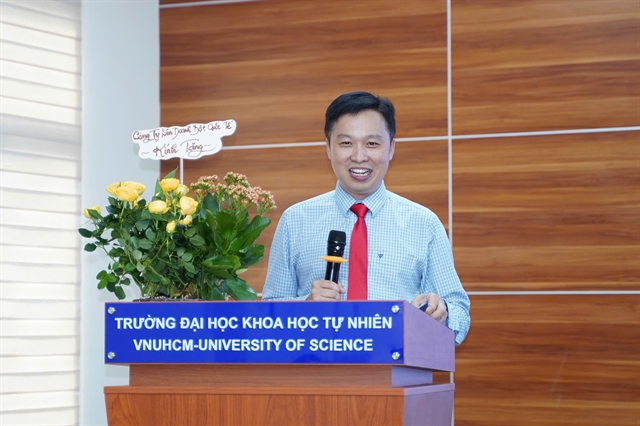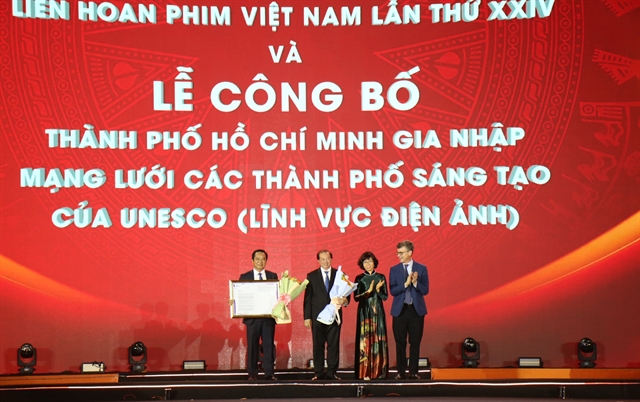 Life & Style
Life & Style

Duy An
Đường Lâm, 44km west of Hà Nội, is not only well known as an ancient village attracting many locals and foreign visitors every day but is also famous for its cassava cake that is so tasty guests never forget it.
In the past, the cake was considered a food of poor people in many rural areas, eaten between crops in order to escape hunger. Several “richer” households fried fresh onions in pork fat as the cake’s dumpling, said middle-age woman villager Trương Thị Hòa, adding that despite this, children were so happy to enjoy the cake because at that time there were no sweets or confectionaries available in the market as there are now.
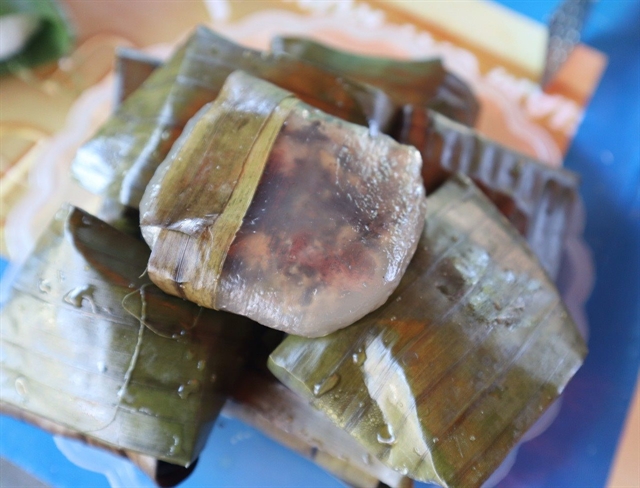
|
| Đường Lâm ancient village in Hà Nội boasts many specialties including cassava cake that many visitors wish to try. Photo nhipsonghanoi.hanoimoi.vn |
Nowadays, almost all of Đường Lâm home cooks know how to make the cake, and a dozen or so sell it to locals and guests visiting the village.
Hòa said she has been selling the cake for many years. “I sell about a hundred cakes a day at VNĐ3,000/cake.”
Cassava cakes made by cooks in the lowland province of Phú Thọ use fresh cassava powder and green bean, while the ingredients of Đường Lâm cake include dried tapioca starch, pork shoulder, fried mince perfume mushroom, wood ear, dried onion and pepper, all wrapped up in banana leaf.
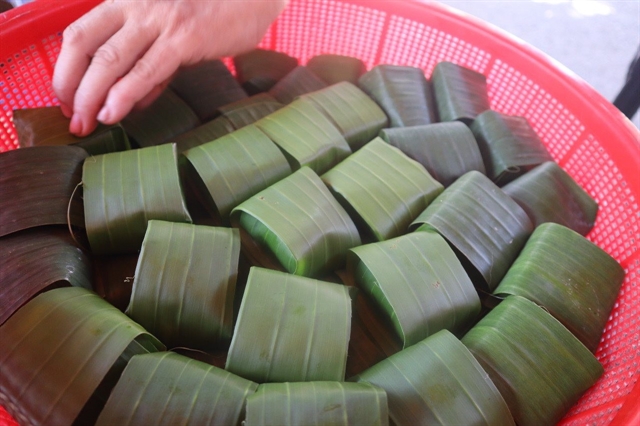
|
| A basket of wrapped up cassava cakes that is ready to be steamed. Photo nhipsonghanoi.hanoimoi.vn |
To make the tapioca, villagers buy fresh cassava, clean it well and soak it in clean water for a night before grinding it. The ground wet powder is then soaked in water to get pure tapioca, then dried well before storing it for later use, said Hòa.
Apart from quality tapioca, Hòa has to choose fresh pork shoulder, and order perfume mushrooms and wood ears from Hòa Bình Province. “All the ingredients are minced carefully before frying with minced dried onions and cooking oil or pork fat,” she said.
Delicious cakes are remembered for a long time. Guests from HCM City and other southern provinces have phoned to order Hòa’s cake so she often has frozen non-steamed cakes in boxes so guests can easily bring them home, keep them in their refrigerator and steamed them later when they would like to eat them, she said.
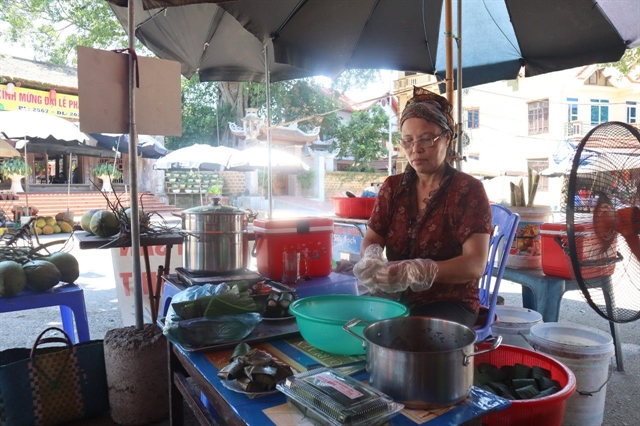
|
| A seller wraps and steams cassava cake on the spot to serve to customers. Photo nhipsonghanoi.hanoimoi.vn |
Apart from cassava cake, Đường Lâm villagers still make other specialties such as bánh gai (thorn leaf cake) chè kho (mung bean pudding) and chè lam (sticky rice ginger peanut bars), she said.
Nguyễn Hồng Hạnh, from Hà Nội, said her family last Sunday went on a one-day tour to Đường Lâm to the ancient village to visit its Mông Phụ Communal House built in 1684. The village was recognized as a National Culture and Historical site by the State in 2006. During the tour, she and her family members enjoyed the village’s specialties including cassava cake.
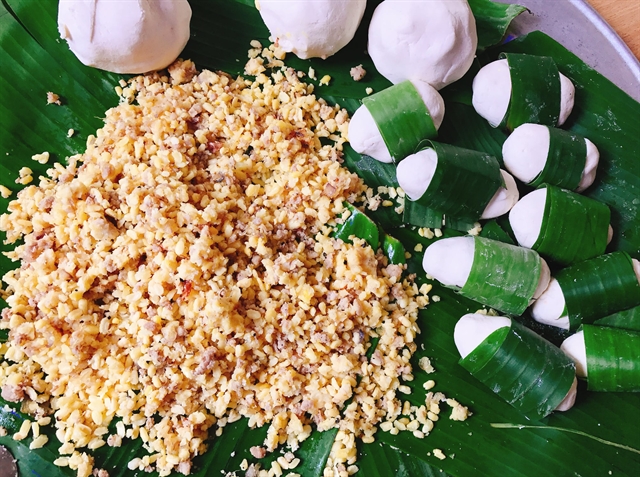
|
| Different from Đường Lâm cassava, which is made of dried tapioca starch and its dumpling is without green beans, Phú Thọ cassava cake, from the lowlands, is made of fresh cassava and green beans. Both of the cakes are enjoyable. Photo danviet.vn |
“The cake has a pure white colour without fiber, cool and tough, while its dumpling is delicious with aromatic flavour,” she said.
According to research in the International Journal of Food Sciences and Nutrition, cassava helps to reduce weight, blood hypertension and headache while improving eye sight and the digestive system. VNS




